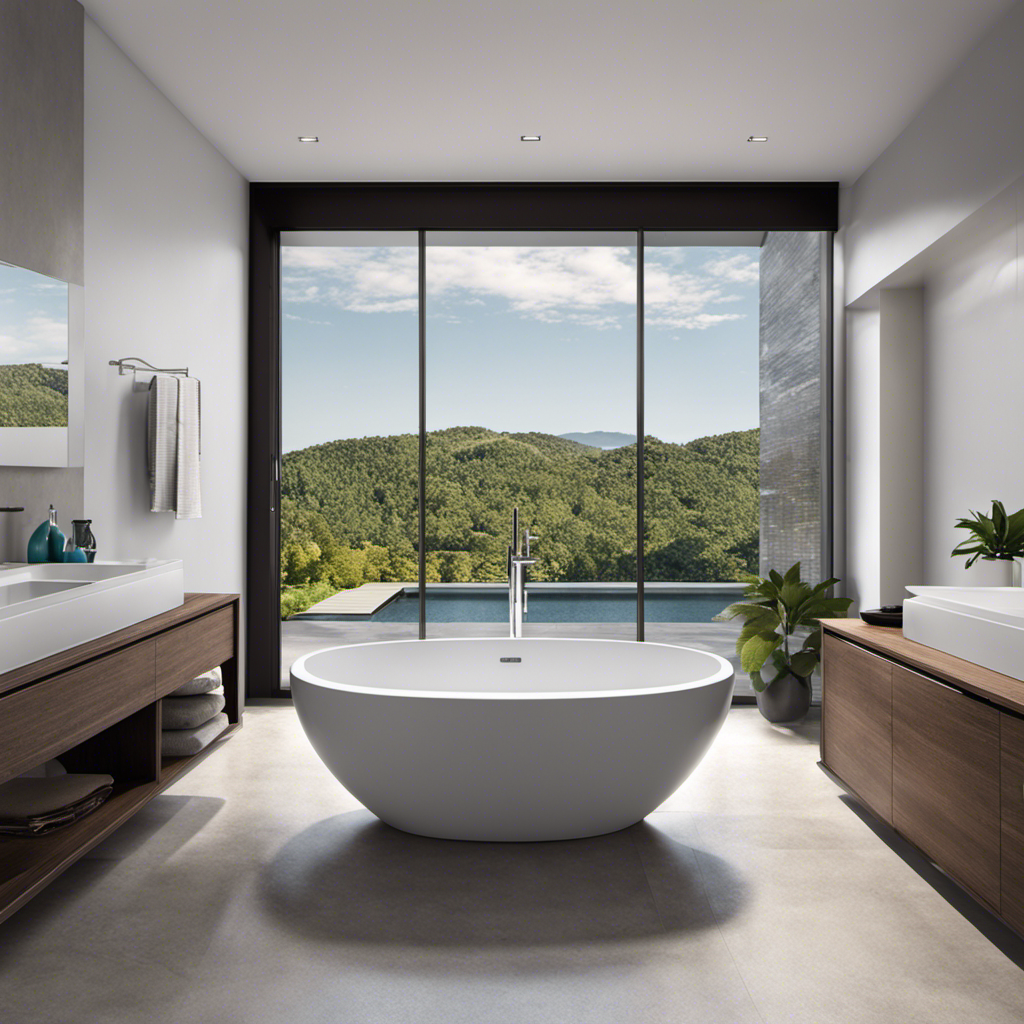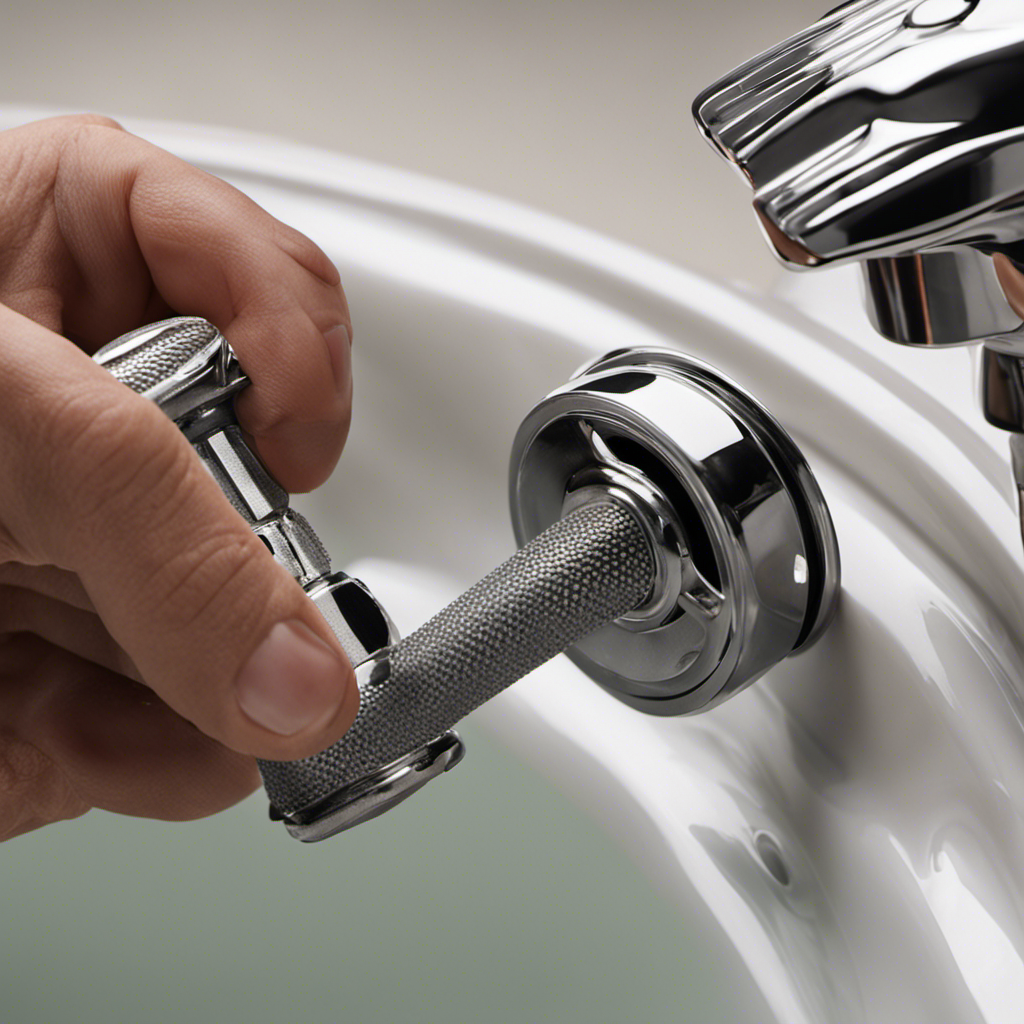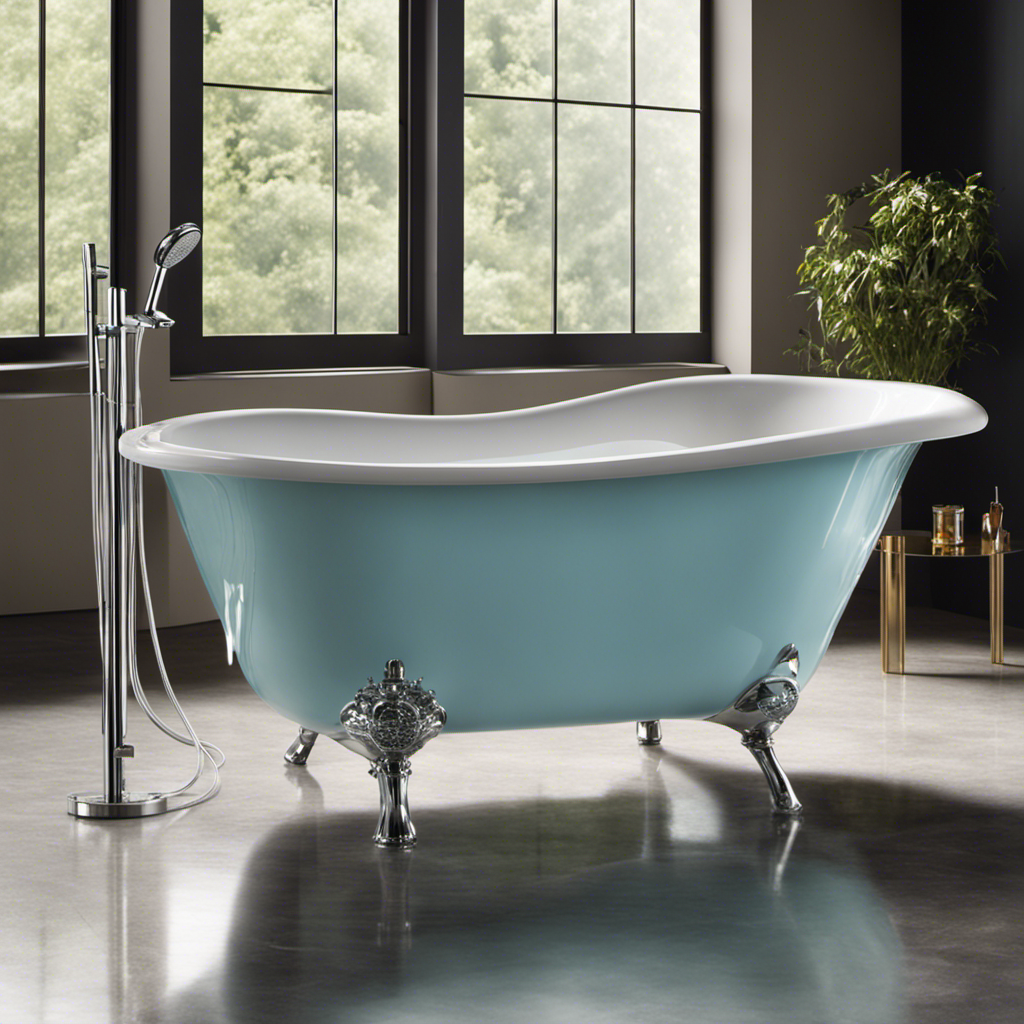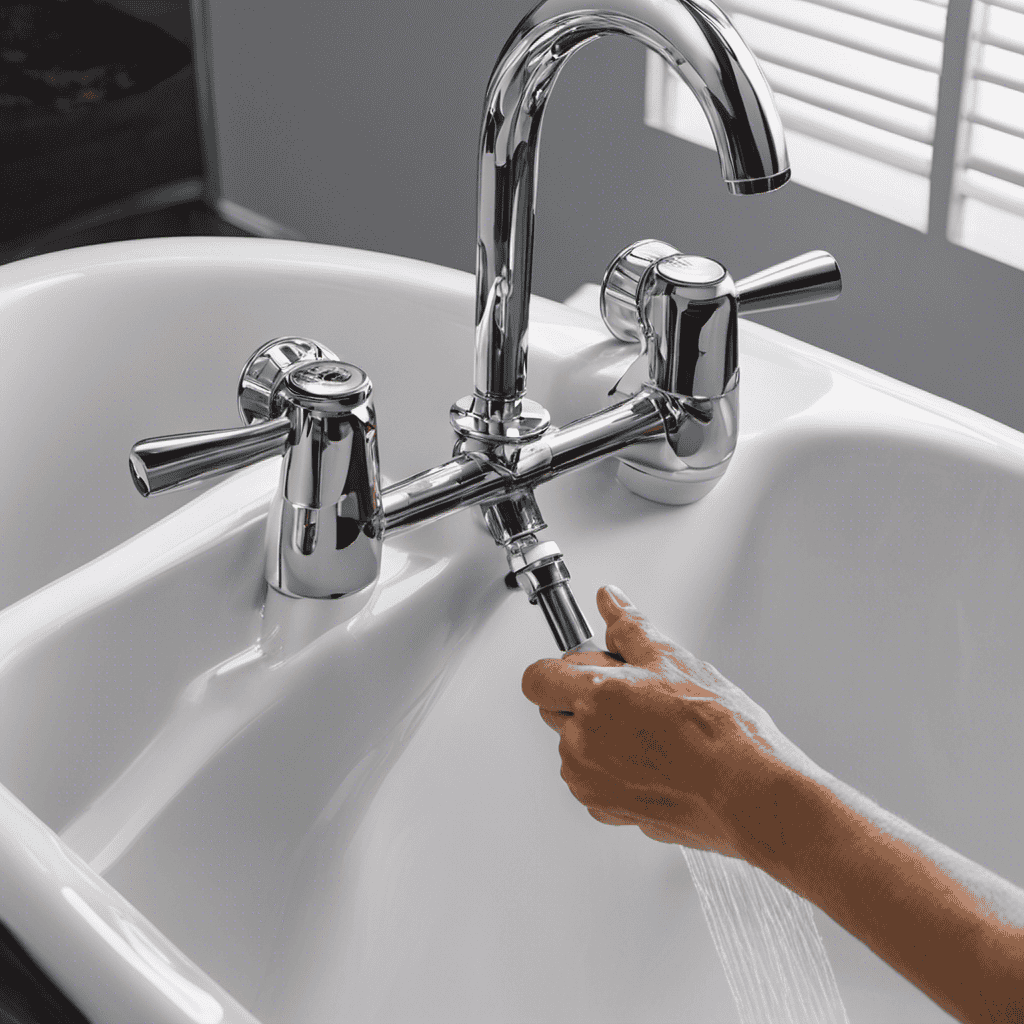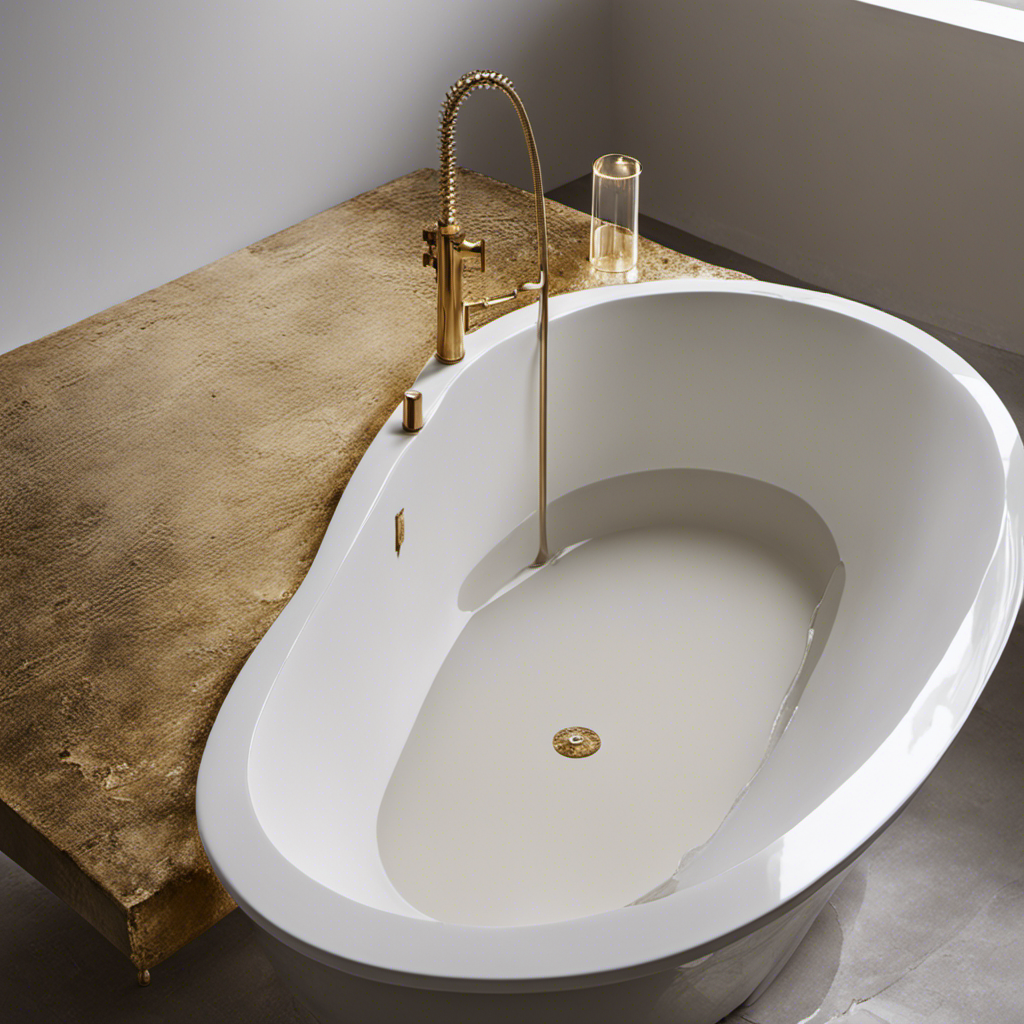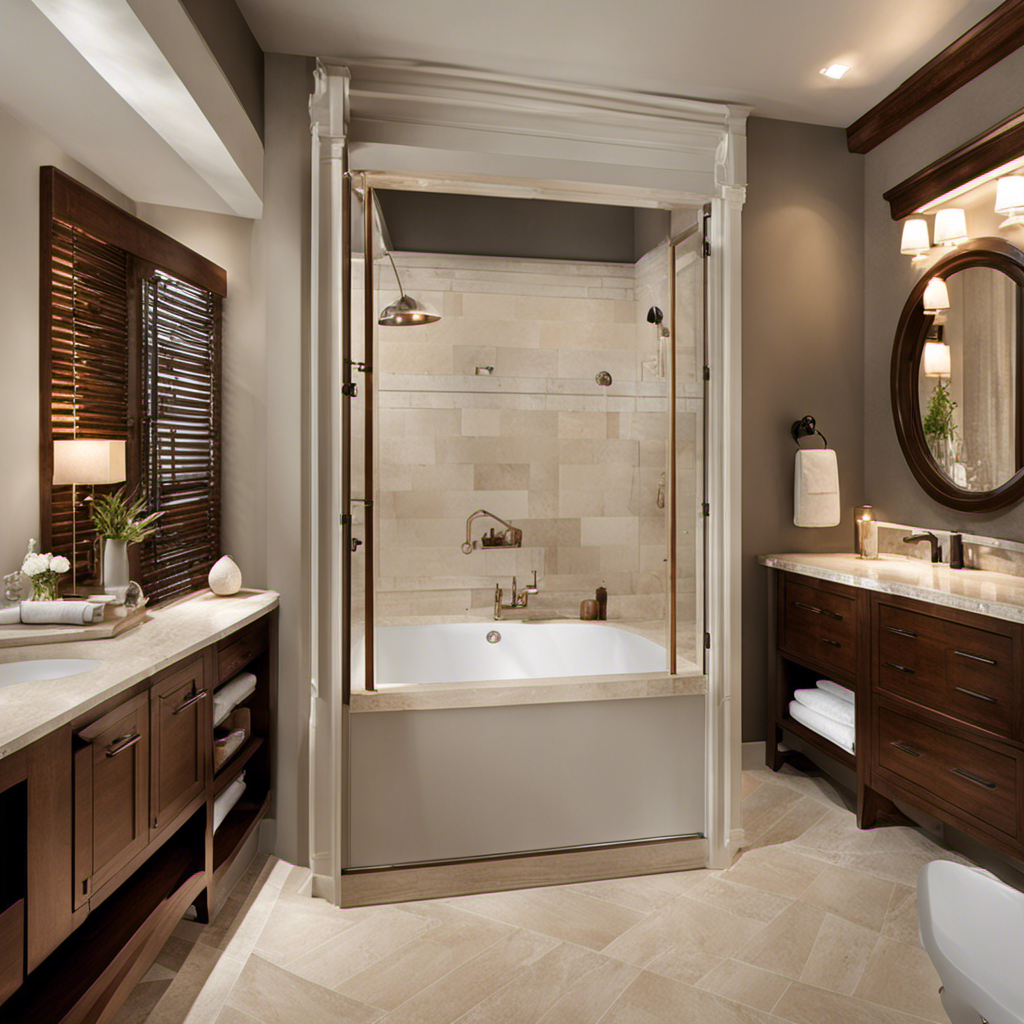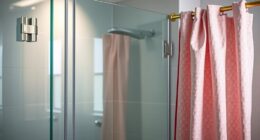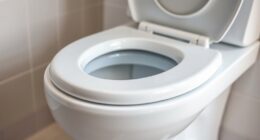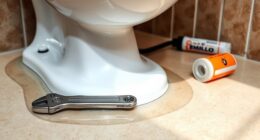Have you ever wondered what a reversible drain bathtub is and why it’s a popular choice for bathrooms? Well, let me shed some light on this intriguing plumbing fixture.
A reversible drain bathtub is a versatile option that allows you to position the drain on either the left or right side, depending on your bathroom layout and personal preference.
In this article, we’ll explore the different types of reversible drain bathtubs, their benefits, installation process, maintenance tips, and how to choose the perfect one for your bathroom.
Get ready to dive into the world of reversible drain bathtubs!
Key Takeaways
- Reversible drain bathtubs can be installed as freestanding or alcove options, with the drain able to be positioned on either side.
- They offer versatile installation options, making them suitable for different bathroom layouts.
- Proper installation, including proper sealing of drain connections and alignment of drain and bathtub, is crucial.
- Reversible drain bathtubs provide customizable water flow, easy adaptation to bathroom remodeling, and cost-effective options for smaller bathrooms.
Types of Reversible Drain Bathtubs
There’s a wide range of options when it comes to types of reversible drain bathtubs. As a plumbing specialist, I can explain the different types in detail.
Firstly, we have freestanding reversible drain bathtubs. These elegant tubs are not attached to any walls and can be placed anywhere in the bathroom. They provide a luxurious and modern look.
On the other hand, we have alcove reversible drain bathtubs. These are designed to fit into a three-wall alcove, offering a more space-saving option. Alcove bathtubs are great for smaller bathrooms or when you prefer a more traditional look.
Both types of reversible drain bathtubs offer the convenience of having the drain placed on either side, allowing for flexibility in installation.
Now that we understand the types, let’s explore the benefits of reversible drain bathtubs.
Benefits of Reversible Drain Bathtubs
One of the benefits of a bathtub with a reversible drain is that it allows for easy customization of the water flow. With this feature, you can choose whether the drain is positioned on the left or right side of the tub, depending on your preference and bathroom layout. This flexibility is especially useful when you’re remodeling or renovating your bathroom, as you can easily adapt the bathtub to fit your needs without the need for extensive plumbing work.
Here are some additional advantages of reversible drain bathtubs:
-
Cost effective options: Reversible drain bathtubs are available in a wide range of price points, making them a cost-effective choice for homeowners on a budget.
-
Space saving designs: These bathtubs are designed to maximize space in smaller bathrooms, allowing you to enjoy the luxury of a bathtub even in limited spaces.
Overall, reversible drain bathtubs offer both practicality and versatility, making them a popular choice among homeowners.
Installation Process for Reversible Drain Bathtubs
Installing a bathtub with a reversible drain involves a straightforward process that can be completed by following a few simple steps. To ensure a successful installation, it is important to avoid common mistakes that can lead to leaks or other issues. One common mistake is not properly sealing the drain connections, which can result in water leakage. Another mistake to avoid is not properly aligning the drain with the bathtub, which can cause drainage problems.
When it comes to installation, there are pros and cons to both DIY and professional installation. DIY installation can save money and give you a sense of accomplishment, but it requires knowledge of plumbing techniques and tools. Professional installation, on the other hand, guarantees expertise and a job well done, but it can be more expensive. Ultimately, the decision between DIY and professional installation depends on your skills, budget, and comfort level with plumbing tasks.
In conclusion, installing a bathtub with a reversible drain is a manageable task if you follow the proper steps and avoid common mistakes. Consider your options and choose the method that best suits your needs and abilities.
| Common Mistakes to Avoid | Pros and Cons of DIY Installation |
|---|---|
| Improper sealing of drain connections | Pros: Save money |
| Misalignment of drain and bathtub | Cons: Requires plumbing knowledge and tools |
| Pros: Sense of accomplishment | |
| Cons: Risk of mistakes | |
| Pros: Expertise and guaranteed quality | |
| Cons: More expensive |
Maintenance Tips for Reversible Drain Bathtubs
To keep your bathtub in good condition, regularly cleaning and inspecting the drain connections is essential. Neglecting this maintenance can lead to common problems such as clogs and leaks. Here are some cleaning techniques and tips to ensure your reversible drain bathtub stays in optimal condition:
- Use a mild, non-abrasive cleaner to clean the bathtub surface.
- Clean the drain cover and remove any debris or hair that may have accumulated.
- Inspect the drain connections for any signs of leaks or loose fittings.
- Ensure the drain pipe is clear of any obstructions by using a plumbing snake or plunger.
- Consider using a drain cleaner to prevent buildup and keep the drains flowing smoothly.
By following these maintenance practices, you can prevent potential issues and prolong the lifespan of your reversible drain bathtub.
Now, let’s discuss the importance of choosing the right reversible drain bathtub for your bathroom.
Choosing the Right Reversible Drain Bathtub for Your Bathroom
When choosing the right bathtub for your bathroom, consider factors such as size, style, and material. Reversible drain bathtubs are a popular choice for many homeowners due to their versatility and functionality. These bathtubs have a drain that can be placed on either side, allowing for greater flexibility in bathroom design and layout.
In terms of materials, reversible drain bathtubs are typically made from durable and long-lasting materials such as acrylic, fiberglass, or cast iron. Each material has its own pros and cons. Acrylic bathtubs are lightweight, easy to clean, and come in a variety of colors and styles. Fiberglass bathtubs are also lightweight and affordable, but may not be as durable as other materials. Cast iron bathtubs are known for their sturdiness and heat retention, but can be heavy and require more maintenance.
Conclusion
In conclusion, a reversible drain bathtub is a versatile and practical choice for any bathroom. It offers flexibility in design and layout, as it can be installed with the drain on either the left or right side. The benefits of a reversible drain bathtub include easy installation, efficient drainage, and customizable placement.
When choosing the right bathtub for your bathroom, consider factors such as size, material, and style. Regular maintenance is important to keep your bathtub in optimal condition. Remember, prevention is better than cure, so follow the maintenance tips provided to ensure the longevity of your bathtub.
So, don’t let the drain direction limit your options. Choose a reversible drain bathtub and soak in comfort and style.
